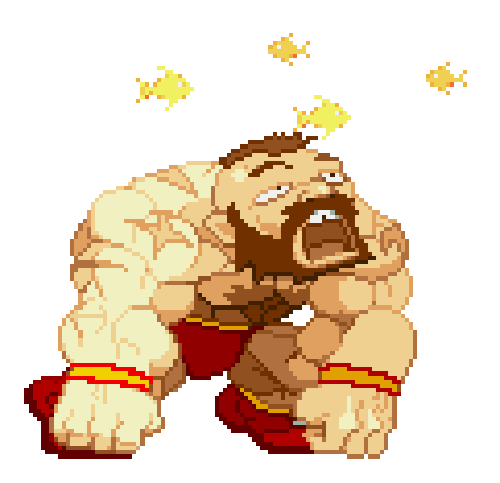The fighting genre is my favorite of them all, and it’s
appropriate since the very first game I played is Street Fighter II Turbo on the SNES. Suitably,
this is the same game that established the genre. I say established as
opposed to created because it’s often argued that no-name titles on the
Commodore 64 implemented the key aspects of what make a fighting game. In spite
of that, the genre didn’t exist until Street Fighter II hit the market. This isn’t to say that in
the industry today, every fighter needs to emulate the gargantuan franchise in every single aspect. The
fundamentals need to be there however, and I’ve created a list of criteria to clear
the confusion that’s prevalent among gamers.
A common misconception of fighters is that all one needs in
order to be in the genre is, quite simply, physical fighting; regardless
of core game play. I’m pointing the finger at games like Super Smash Bros., Power Stone and others of that
sort, but I’ll examine Smash Bros. in
this case.
As mentioned earlier, to be able to fit in the fighting genre a
game needs to have certain aspects that are more or less inspired by Street Fighter II. These
few aspects include:
- Orientation. What I mean by this is, when two players are clashing, attacking and defending are always geared toward your opponent specifically. Movement is directly affected because of this; directional inputs correspond to toward and away, not left and right.
- A life bar, or something of such nature, that represents a finite amount of health/stamina for the player (an obscure exception would be Bushido Blade, which lacks any status icons).
- Stages that in no way dictate the outcome of a battle due to random chance, or hazardous environmental change. There’s a clear difference between environment interaction and an arbitrarily hostile environment.
- All game play occurs on a 2D plain, or in cases of 3D fighters, the ‘3D’ is the ability to sidestep (once again, Bushido Blade being an exception, which cleverly executed environment exploration with 3D fighting mechanics).
Knowing these four factors, it becomes quite obvious that Super Smash Bros. doesn’t quite fit
in with the rest of the crowd. Rather, it’s part of a subgenre dubbed by
many veterans as ‘brawlers’ (which is exactly how it refers to itself; Super Smash Bros. Brawl):
movement is much more free form, attacking and defending aren’t affected by
orientation, there’s an incredible arsenal of items and weapons that drastically
change the pace of a fight, and we all know that Smash Bros. is quite enthusiastic toward crazy
environments. All things considered, Smash is much more akin to the action/beat
’em up genres than fighters, and it shows vibrantly when you consider how
well-executed its adventure mode is; without any change in mechanics, Smash can
be a platfofmer, a beat ‘em up or a combination of the two whenever it pleases.
Smash Bros. has the freedom to go from this:
By contrast, take a look at Tekken 6’s Campaign mode:
It dabbles in similar concepts but is far less varied, because
the mechanics in question aren’t as suitable for the situation. Every few
moments are mediocre stop-and-go encounters because as soon as you meet an
enemy, orientation kicks in and all flow of movement is lost.
The most interesting part of all this though, is Smash’s
percentage system and how it works.
In a Smash match, your percentage increases as you take damage,
and higher percentage means greater knockback, with the ultimate objective of
knocking your opponent off-screen to score points or deplete their stock of
lives. It’s a concept I’ve never seen in any other game, but it works not because of the game itself (i.e. a
life bar), but relies much more heavily on human incentive. It works because of
the assumption that, in this competitive situation, players will comply with
the task at hand. In reality it’s a system that gives far too much leeway to be
truly fair; who wins a match if the score is even but my opponent has 200%
damage while I have 50%? No one does, you’re
forced into sudden death, which is essentially a 50/50 situation given that
both players are of similar skill level. It’s that gaping hole in the system
design that further prevents it from being considered part of the
traditional fighting game scene, if its other aspects aren’t enough.
So now one might ask; “Ryan, why are you telling me all this?”
Well, it’s certainly not stemming from a dislike for Smash Bros. As far as I’m
concerned, if you don’t like Smash,
you’re unlikely to be the kind of person I’d hang out with on a Saturday night.
I’m presenting you with this because Smash cannot
and should not be put in the same
category as other traditional fighters despite people’s efforts to do so; if a
friend were to ask me what my favorite fighting games were in an effort to get
familiar with the genre and community, and then I were to respond with “Street
Fighter, Dragon Ball Z Tenkaichi and Smash Bros.”, don’t you think that’d be a bit misleading considering the friend’s
intent? Those are three very
different games rooted in their own separate conventions, serving their own
purposes and catering to completely different demographics.
A bit of clarity is all I’m asking for.




No comments:
Post a Comment